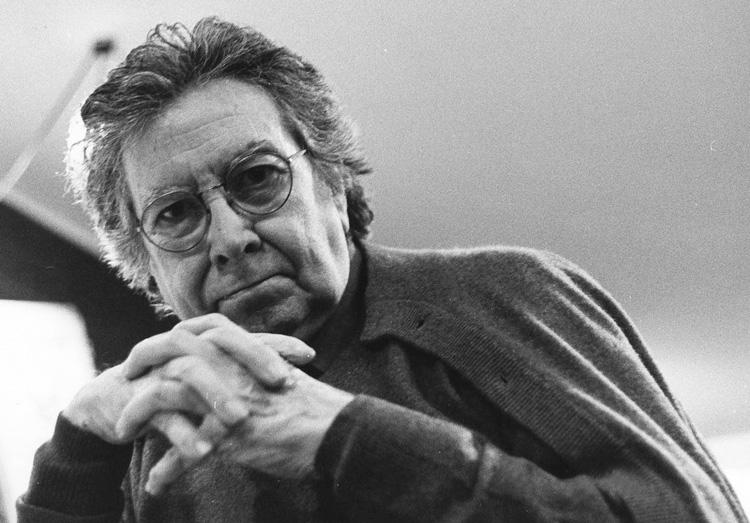New readings around the collection. Tàpies
"When they brought out L'esperit català I got up from my chair like a spring and, immediately, I thought "It has to be ours". I said to Javier with enthusiasm: 'Don't you like it, it's really good, isn't it? These words of María Josefa Huarte express the love affair she felt when she saw this work at the Maeght Gallery in Paris in 1971, and mark the beginning of the relationship between the collector and the works of Antoni Tàpies.
 On the occasion of the loan of The Catalan spirit to the Tàpies Foundation of Barcelona for the exhibition "Antoni Tàpies. Collection. 1966-1976"Two paintings have been received at the Museum as an exchange, Dies d'Aigua (1987) y Gran Creu (1989), and a sculpture, Matalàs (1987). These works have been selected by the Museum's curatorial team based on their relationship to the works by Tàpies in our collection.and its presence in Pamplona is a unique opportunity to update, broaden and deepen the understanding of our pieces, completing its meaning and significance. Thus, the selection criteria of these three specific works and not others, has been based on the dialogue that can be established with the Tàpies belonging to the Museum.The collection of María Josefa Huarte is based on her intuition and personal taste, both from the formal and conceptual point of view, as well as from the emotional one, since it should not be forgotten that the collection of María Josefa Huarte is based on her intuition and personal taste. In this way, not only help us to understand the creative universe of the author, but also to understand the artistic criteria of the patron of the arts.. These paintings and sculptures are included within the informalism and the research of formal solutions around the wall and the recreation of humble matter, on which, as graffiti, elementary signs such as the cross, geometries or scribbles that symbolize the mysteries of life and death associated with the vital experiences of human beings are arranged.
On the occasion of the loan of The Catalan spirit to the Tàpies Foundation of Barcelona for the exhibition "Antoni Tàpies. Collection. 1966-1976"Two paintings have been received at the Museum as an exchange, Dies d'Aigua (1987) y Gran Creu (1989), and a sculpture, Matalàs (1987). These works have been selected by the Museum's curatorial team based on their relationship to the works by Tàpies in our collection.and its presence in Pamplona is a unique opportunity to update, broaden and deepen the understanding of our pieces, completing its meaning and significance. Thus, the selection criteria of these three specific works and not others, has been based on the dialogue that can be established with the Tàpies belonging to the Museum.The collection of María Josefa Huarte is based on her intuition and personal taste, both from the formal and conceptual point of view, as well as from the emotional one, since it should not be forgotten that the collection of María Josefa Huarte is based on her intuition and personal taste. In this way, not only help us to understand the creative universe of the author, but also to understand the artistic criteria of the patron of the arts.. These paintings and sculptures are included within the informalism and the research of formal solutions around the wall and the recreation of humble matter, on which, as graffiti, elementary signs such as the cross, geometries or scribbles that symbolize the mysteries of life and death associated with the vital experiences of human beings are arranged.
ANTONI TÀPIES
 Antoni Tàpies (Barcelona 1923-2012), a self-taught artist, is one of the main representatives of Spanish post-war art. He was founding member, in 1948, of the group Dau al Setand the The beginnings of his artistic career can be connected to surrealism.from which will drift towards a material painting linked to the international informalist movement.. Starting in the 1950sthe work Tàpies gained wide international recognitionThis did not prevent the artist from continuing to vindicate his Catalan identity and from formal and symbolic aspects the political character of his art emerges, especially in the last years of Franco's regime. In the eighties Tàpies is attracted by Eastern philosophies and especially by Zen.
Antoni Tàpies (Barcelona 1923-2012), a self-taught artist, is one of the main representatives of Spanish post-war art. He was founding member, in 1948, of the group Dau al Setand the The beginnings of his artistic career can be connected to surrealism.from which will drift towards a material painting linked to the international informalist movement.. Starting in the 1950sthe work Tàpies gained wide international recognitionThis did not prevent the artist from continuing to vindicate his Catalan identity and from formal and symbolic aspects the political character of his art emerges, especially in the last years of Franco's regime. In the eighties Tàpies is attracted by Eastern philosophies and especially by Zen.
Date
November 2, 2016